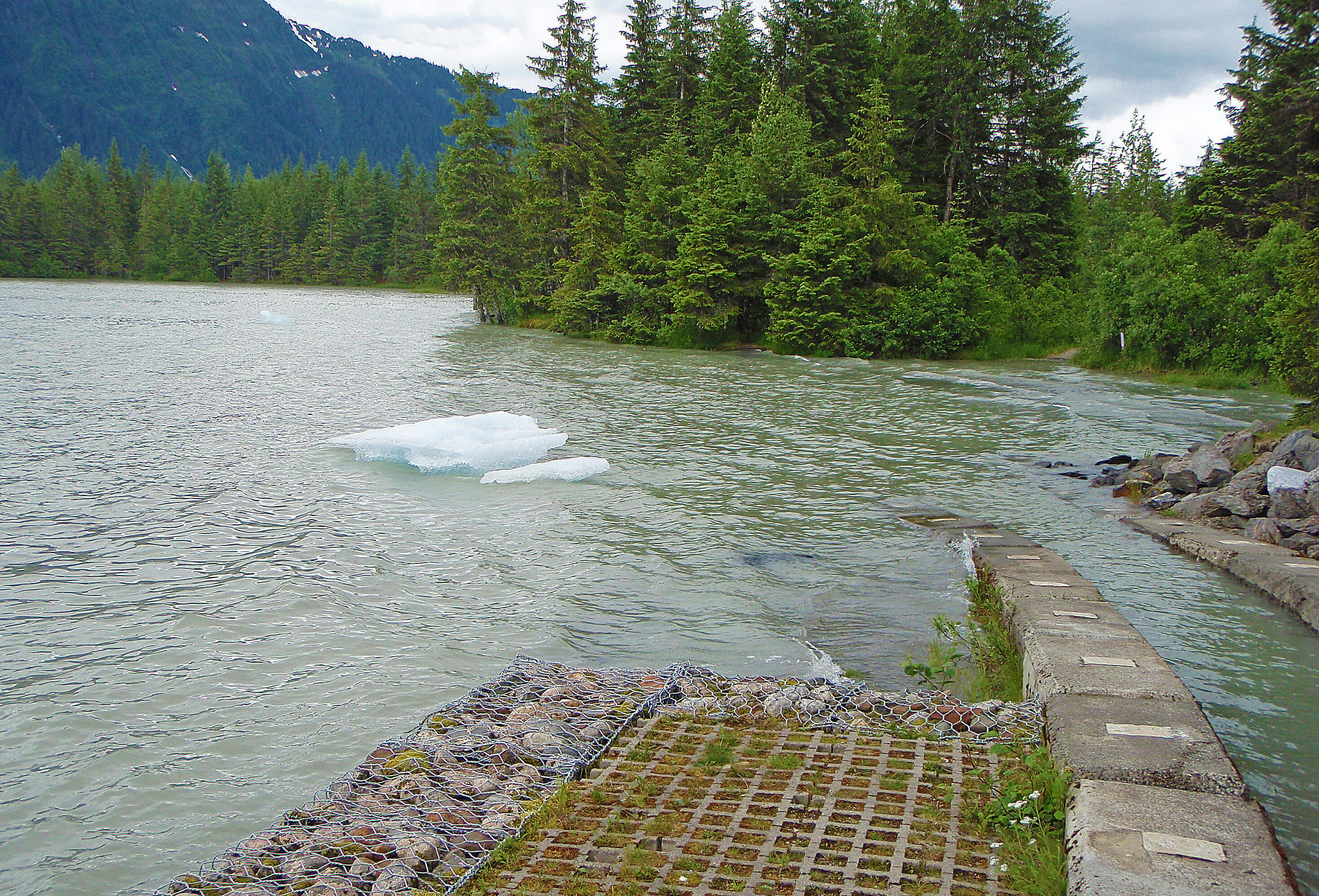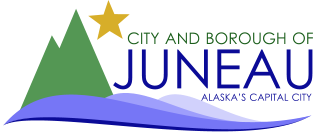
Jökulhlaup season is here—stay alert to glacier conditions
Jökulhlaup season is here, and that means a higher chance of flooding along the Mendenhall River system. Although not every season sees an outburst, and not every outburst leads to major flooding, it’s important to be aware of your surroundings at this time of year—especially if you live near creeks and rivers in Mendenhall Valley.
Weather patterns are changing rapidly by the year and we still don’t know how the 2023 outburst affected the river and basin. No matter how long you’ve spent in and around the river, take an extra measure of caution this year and stay alert to weather conditions and advisories.
New to Juneau? Start at the beginning. Otherwise, skip to How can I get the latest glacial outburst updates and forecasts?.
What’s a jökulhlaup? How does it happen?
A jökulhlaup is also known as a glacial outburst flood. Jökulhlaups occur when a body of water within a glacier breaches its dam. In Juneau, that often happens when glacier ice accumulates to form a natural dam. The basin created by this dam fills with meltwater and more ice. However, the glacier ice of the dam wall is vulnerable to pressure, heat, and movement. If the wall is breached or collapses, the basin drains into the adjoining waterways and water levels rise rapidly. Depending on the amount of water released—in other words, how full the basin is—this may cause flooding downriver.
Where do jökulhlaups happen in Juneau?
Jökulhlaups most often occur off Mendenhall Glacier in the area known as Suicide Basin. The basin drains into Mendenhall Lake, and a jökulhlaup from Suicide Basin could lead to flooding along the Mendenhall River system (including Montana Creek).
What conditions lead to jökulhlaups?
Any weather condition or event that affects glacier ice may lead to a jökulhlaup, including unusually warm weather, heavy rain, or seismic activity.
Do jökulhlaups always cause major flooding?
The scale of flooding in surrounding waterways following a jökulhlaup depends on how much water was released and on water levels before the outburst. For example, an outburst during heavy rainfall could lead to the basin releasing into a high river, which would make significant flooding more likely. Alternatively, a partial breach when river levels are low might release smaller amounts of water from the basin without causing major flooding.
The U.S. Geological Survey and the National Weather Service operate a number of monitoring tools to track conditions at Suicide Basin, Mendenhall Lake, and Mendenhall River—many of which you can follow online. Visit the Suicide Basin monitoring page at weather.gov/ajk/SuicideBasin and the Mendenhall River gauge at water.noaa.gov/gauges/MNDA2.
Learn more about how the forecasting and monitoring tools work, including new improvements for 2024, by watching the recording of a recent town hall meeting with CBJ, NWS, USGS, and University of Alaska Southeast scientists.
Follow the NWS Juneau office on Facebook or Twitter to get the latest weather information for Juneau.
How will I know if a jökulhlaup flood is coming?
CBJ, the National Weather Service, and other agencies closely monitor Suicide Basin and are able to warn the public when a jökulhlaup occurs. It takes several hours for the water released by a glacial outburst to reach Mendenhall Lake, and several more hours for water levels along Mendenhall River to reach their peak. In 2023, this allowed residents along the river to evacuate before floodwaters reached their homes.
Glacier ice is unpredictable, and there’s no easy way to determine how or when a jökulhlaup will occur. The best way to be prepared is to pay attention to weather advisories, be alert for emergency announcements, and have a plan ready just in case you need to take quick action.
How can I be prepared for a flood event?
By asking this question, you’ve already taken the most important step toward emergency readiness. Simple advance planning—agreeing where your household will meet, locating power and gas shut-offs, and assembling basic emergency supplies—can make all the difference when you need to react quickly in a stressful situation. Take a moment to read about Personal and Household Preparedness in the event of an emergency and then take the first steps to prepare yourself and your household.
Learn more about how to stay safe during a flood at CBJ’s Juneau Hazards page (click on the “Floods” tab).
